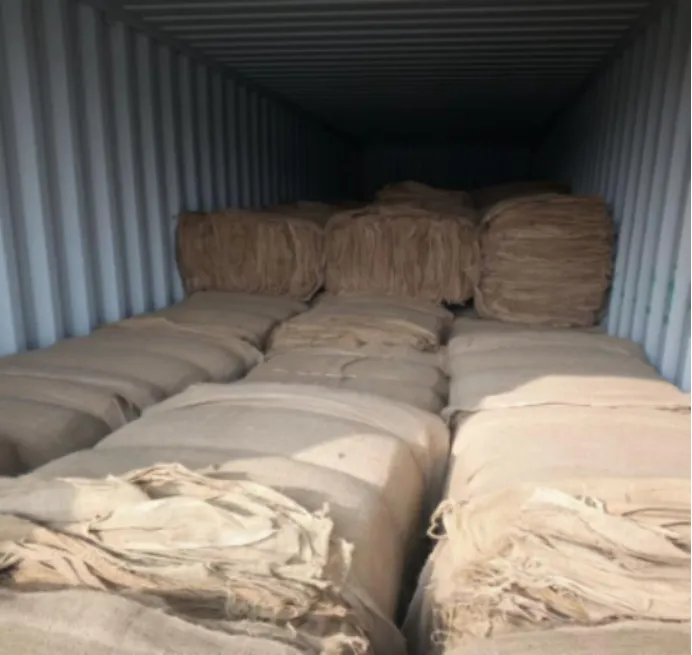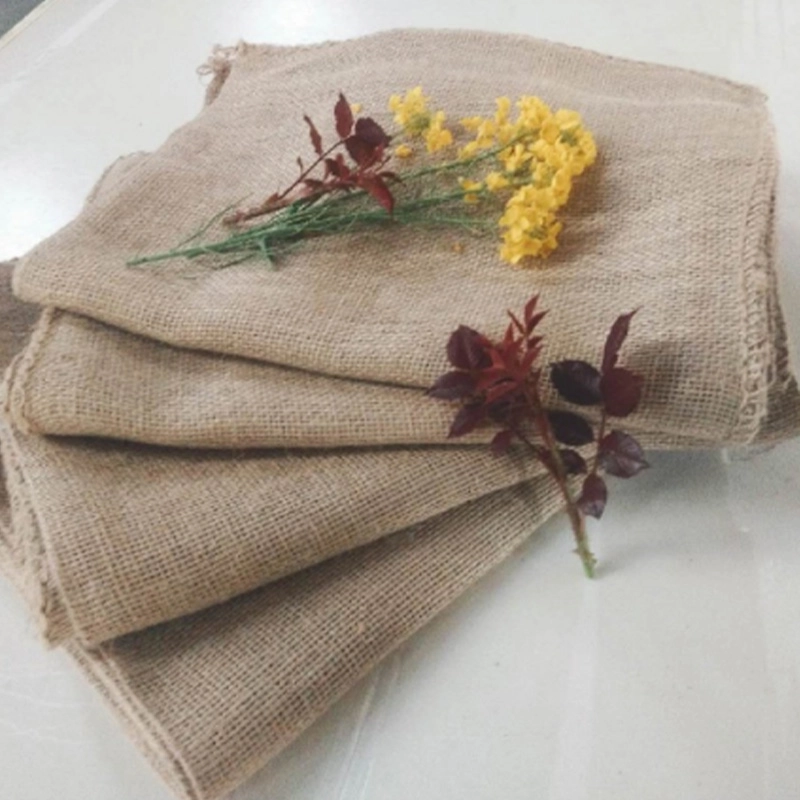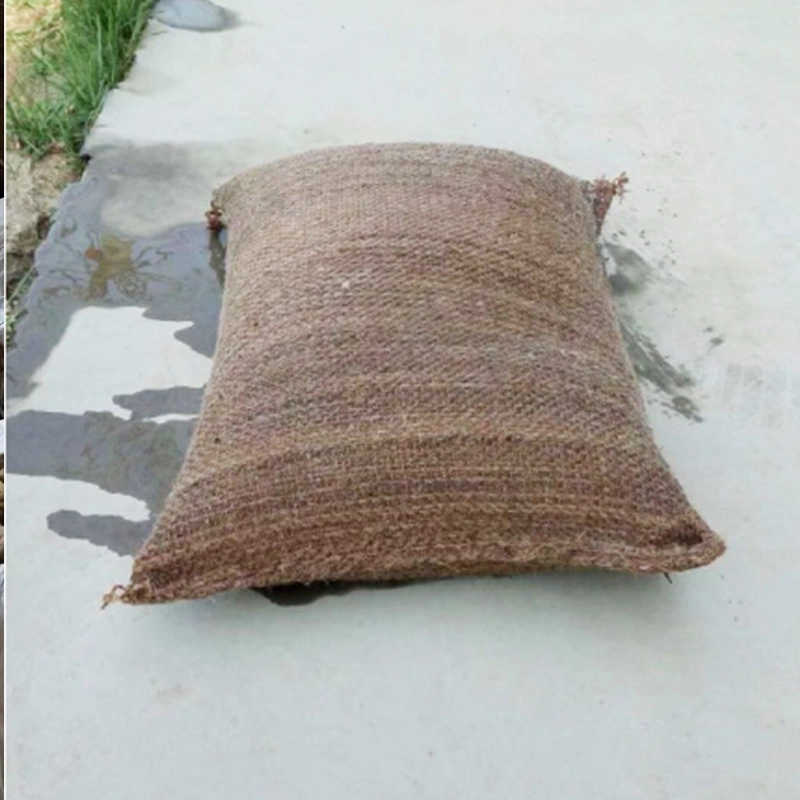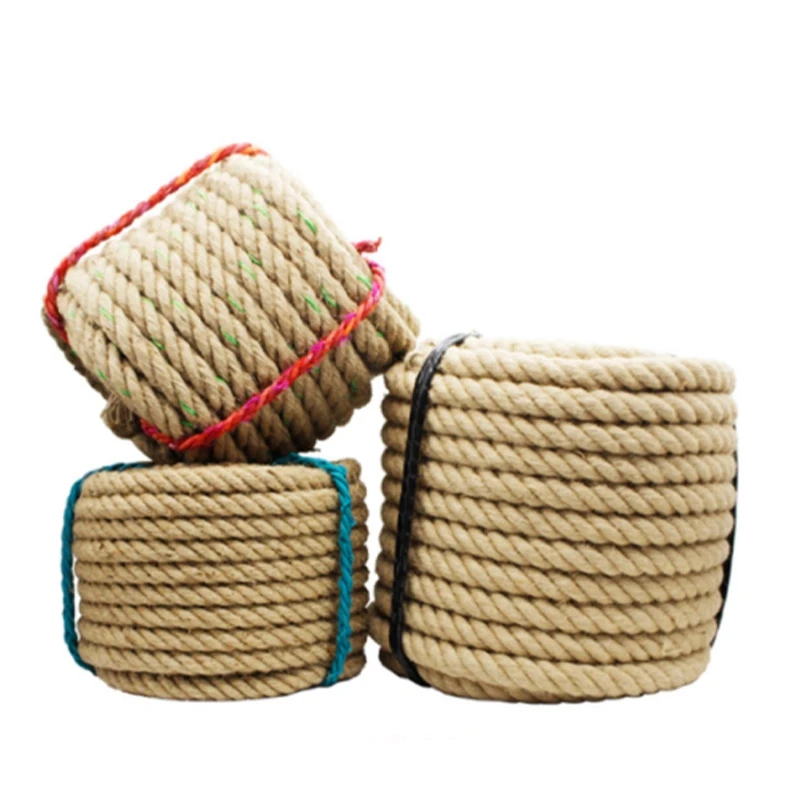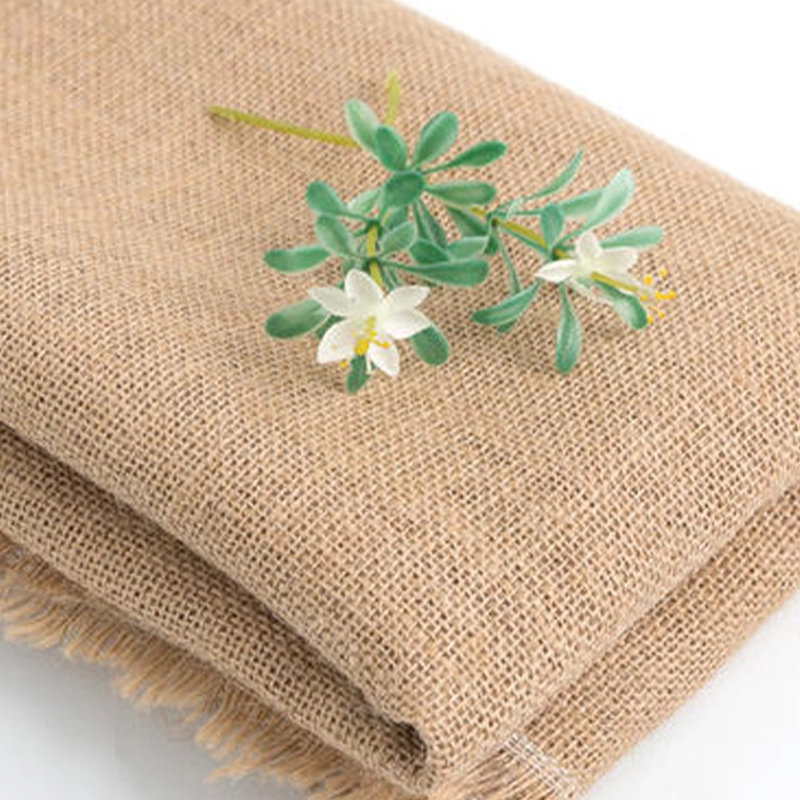Jute ass eng natierlech Faser populär bekannt als déi gëllen Faser. Et ass ee vun de bëllegsten an de stäerkste vun all natierlechen Faseren a gëllt als Faser vun der Zukunft. Jute ass zweet nëmmen Koteng an der Welt Produktioun vun Textilfasern. D'Jutefaser ass och bekannt als Pat, Kosta, Nalita, Bimli oder Mesta (Kenaf).
Jute is not only a major textile fibre but also a raw material for non traditional and value added non-textile products. Jute is used extensively in the manufacture of different types of traditional packaging fabrics, manufacturing Hessian, saking, carpet backing, mats, bags, tarpaulins, ropes and twines. Recently jute fibers are used in a wide range of diversified products: decorative fabrics, chic-saris, salwar kamizes, soft luggage's, footwear, greeting cards, molded door panels and other innumerable useful consumer products. Supported by several technological developments today jute can be used to replace expensive fibers and scare forest materials.
Jute sacks/burlap bag/gunny bag
Wat ass Jute?
Plastikstuten hunn eng bedeitend Roll an der Verschmotzung vun der Ëmwelt gespillt. Och wa se haltbar sinn, si se net biodegradéierbar, wat se bal onméiglech mécht fir sécher ze entsuergen. Fuerscher a Wëssenschaftler hunn onermiddlech geschafft fir alternativ Faseren ze fannen, déi net nëmme Plastik, mee aner synthetesch Faseren ersetzen ouni esou vill Schued un der Ëmwelt.
Jute, also known as the “golden fibre’ – is a natural fibre that has provided a reprieve. It’s used to make a variety of items which include sacks, curtains, furniture accessories and rustic looking Jute Poschen.
The fibre is made from plants with long, soft and shiny fibres spun into strong but coarse threads. This one-of-a-kind fibre which is second to cotton in terms of production provides an alternative to synthetic fibres and materials like plastic.
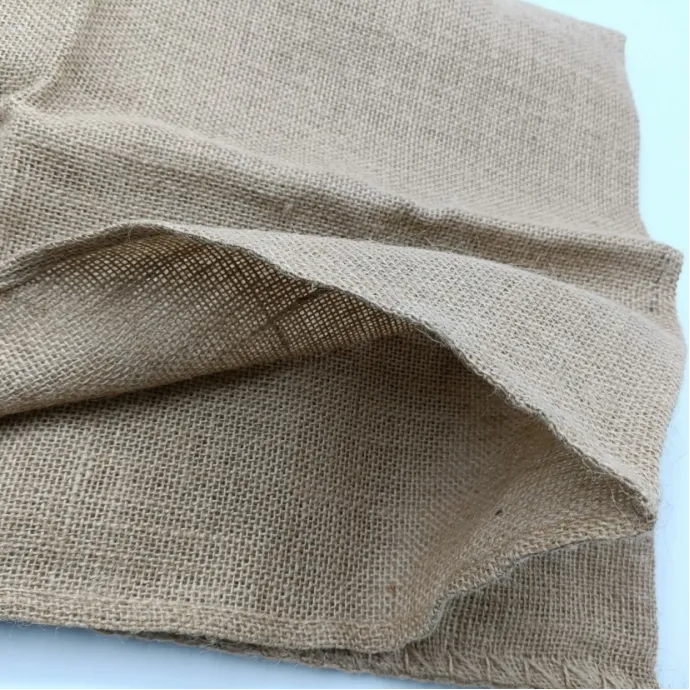
Jute Types
Neie Jutebeutel mat engem grénge Sträif: 75CM * 110CM Gewiicht: ongeféier 1000g all
Neie Jutebeutel mat engem grénge Sträif: 74CM * 105CM Gewiicht: ongeféier 600g all
Neie Jutebeutel: 74CM * 105CM Gewiicht: ongeféier 850g all.
Neie Jutebeutel: 60CM * 100CM Gewiicht: ongeféier 480g all
New burlap bag (thick burlap bag) : 60CM * 100CM Weight: approximately 600g each
Neie Jutebeutel (mëttelgréisst): 60CM * 90CM Gewiicht: ongeféier 450g all
New burlap bag (thick burlap bag) : 60CM * 90CM Weight: approximately 580g each
Neie Jutebeutel (mëttelgréisst): 50CM * 74CM Gewiicht: ongeféier 300g all
Neie Jutebeutel (kleng Gréisst): 40CM * 60CM Gewiicht: ongeféier 200g all
90% new burlap bag (large size) : 74CM * 107CM Weight: approximately 850g each
Large patch burlap bag (large size) : 74CM * 107CM Weight: Approximately 850g each
Small patch burlap bag (large size) : 74CM * 107CM Weight: Approximately 850g each
Gréng Sträif al Jutebeutel (grouss Gréisst): 75CM * 110CM Gewiicht: ongeféier 1000g all
burlap Sak Spezifikatioune vu grouss bis kleng.
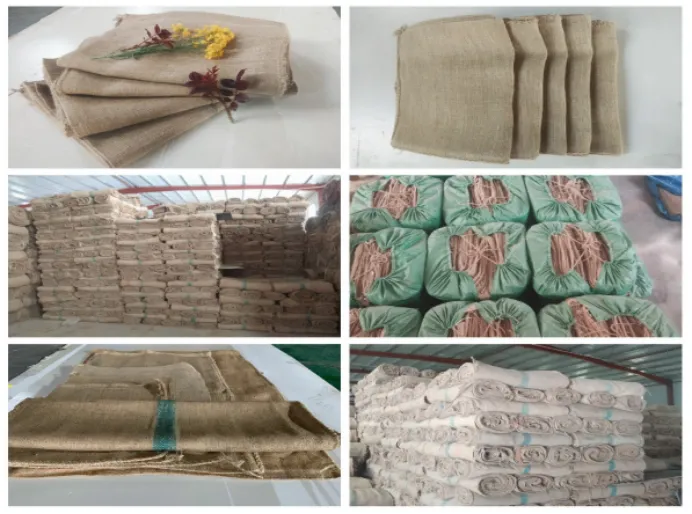
National Standard Jute Bag: 107 * 74cm.
Applicabel Gamme: allgemeng benotzt fir Erdnuss a Bounen ze halen, fir Iwwerschwemmungsverhënnerung a Kontroll;
Small burlap bag :50 * 70cm.Applicable range: commonly used as flood prevention burlap bag, flood prevention burlap bag, and glass ball burlap bag;
Kleng Jutebeutel: 40 * 60cm.Uwendungsomfang: allgemeng benotzt fir Hardwareverpackungen wéi Schrauwen an Nëss;
Kleng Jutebeutel: 30 * 50cm. Applicabel Gamme: allgemeng benotzt fir Hardwareverpackung a Buedemfüllung;
Customisable Gréisst no Ufuerderunge.

